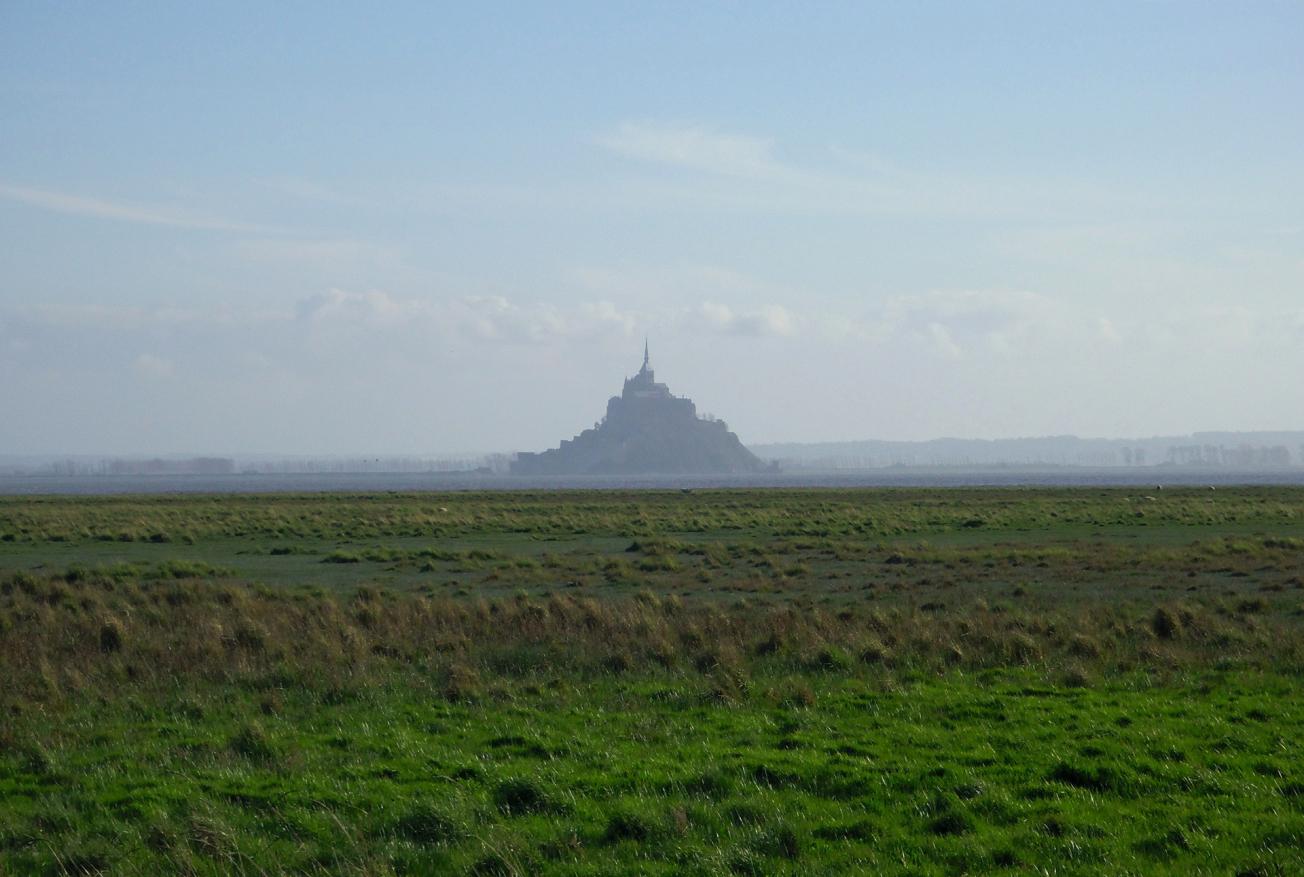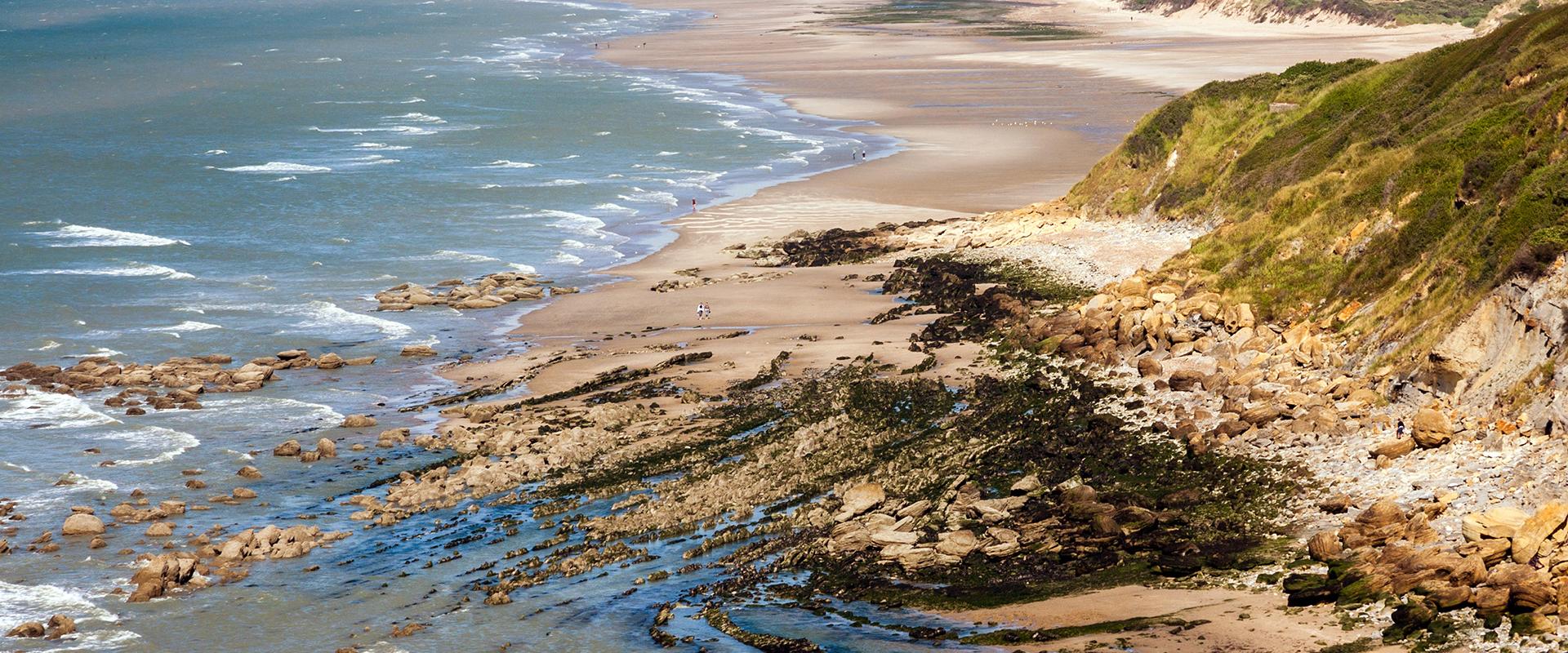
In the Bay of Mont-Saint-Michel, the greatest high-water level reached, as occurred in 2009, could be reduced by 15% of the magnitude of sea level rise (e.g. 15 cm if sea level rise is 1 m). Inversely, coastal areas to the north-east, like Calais, could see an increase in tidal range with a greater risk of erosion and coastal flooding.
© BRGM - Flora Lucassou
Rising sea levels caused by climate change will have an effect on tidal dynamics in North-West Europe, from the Northern Spanish coastline to Norway. In some areas, the difference between high water and low water (the tidal range) will be exacerbated, for example on the eastern Channel coast, from the Cotentin peninsula to Calais. In other areas, the tidal range will decrease, notably on the western Channel coast, e.g. the Bay of Mont-Saint-Michel. The changes in high-water and low-water levels compared to average levels could be as much as 15% of the magnitude of sea level rise, leading to variations of plus or minus 15 cm if sea levels rise by 1 m.
These effects, especially in the North Sea will vary depending on the coastal protection strategies implemented. For example, in the southern and south-eastern part of the North Sea, protecting current coastlines would imply an increase in high-water levels, while no protection would lead to a decrease in high-water levels in this area. Consequently, future water levels cannot simply be determined by adding sea level rise to current water levels: depending on the sites considered, sea level rise and protection strategies against coastal flooding will have a significant influence on tidal dynamics. The results were obtained using a computational model, which factored in the physical properties of tides and sea basins, such as the reduced bed friction associated with higher water levels.
Simulations of rising sea levels by up to 10 m
A wide range of sea level change scenarios were simulated: from -0.25 m (last century’s level) to +10 m, a level which could be reached by 2300 if greenhouse gas emissions continue to increase.
Two types of hypotheses were selected. The first one focused on a uniform rise in sea levels across the area and tested for varying magnitudes of sea level rise. It should be noted that a uniform rise in sea levels caused non-uniform tide changes. The second considered a non-uniform rise in sea levels by 2100. Furthermore, opposite protection strategies against coastal flooding were considered, consisting of either infinitely high coastal protection along the current shoreline or no protection at all.

Tide simulations for non-uniform sea level rise by 2100, which corresponds to the median scenario (RCP4.5) of the latest IPPC report.
© BRGM
The first attempts to model tidal dynamics on the European continental shelf date back to 1989, but most studies were carried out in the last five years. However, this is the first time that simulations have been carried out across North-West Europe, with such a refined analysis of tidal components. These calculations were carried out using the MARS model developed by Ifremer and the Tidal Toolbox, a tide post-processing tool designed by Legos, a French geophysics and spatial oceanography laboratory.
The effects of sea levels on tides are currently being studied by several teams involved in the World Climate Research Programme’s sea level "Grand Challenge". A summary of these results is likely to be included in future IPCC reports, e.g. the Special Report on the Ocean and Cryosphere and the 6th Assessment Report.
Increased coastal erosion and flooding risks in the future
The 5th IPCC report has confirmed that climate change-induced sea level rise is expected to occur at a faster pace. Since 1870, sea levels have risen by 20 cm on a global scale. While sea levels rose by 1.7 mm per year in the 20th century, the rate of sea level rise is now estimated at 3.2 mm per year. By 2100, forecasts predict that sea levels will have risen by an extra 50 cm to 1 m and maybe more.
The impact of this magnitude of sea level rise will be felt both in terms of coastal erosion and flooding risks in coastal areas. As far as flooding is concerned, sea level rise could make things worse in two ways: it could lead to the permanent flooding of lower areas such as coastal marshes and low-lying islands, leading to their disappearance, and it could cause more frequent and intense storm surges in the future.








The calculations provided a first realistic projection of tide changes by that date, with non-uniform variations of -10 cm and +10 cm. Figure (a) illustrates the sea level rise scenario considered while Figures (b) and (c) show the effects of the selected sea level rise magnitude on high-water levels compared to average levels, in metres and as a percentage of local sea rise levels respectively. The analysis was for a typical year when high-water levels were highest, i.e. 2009.